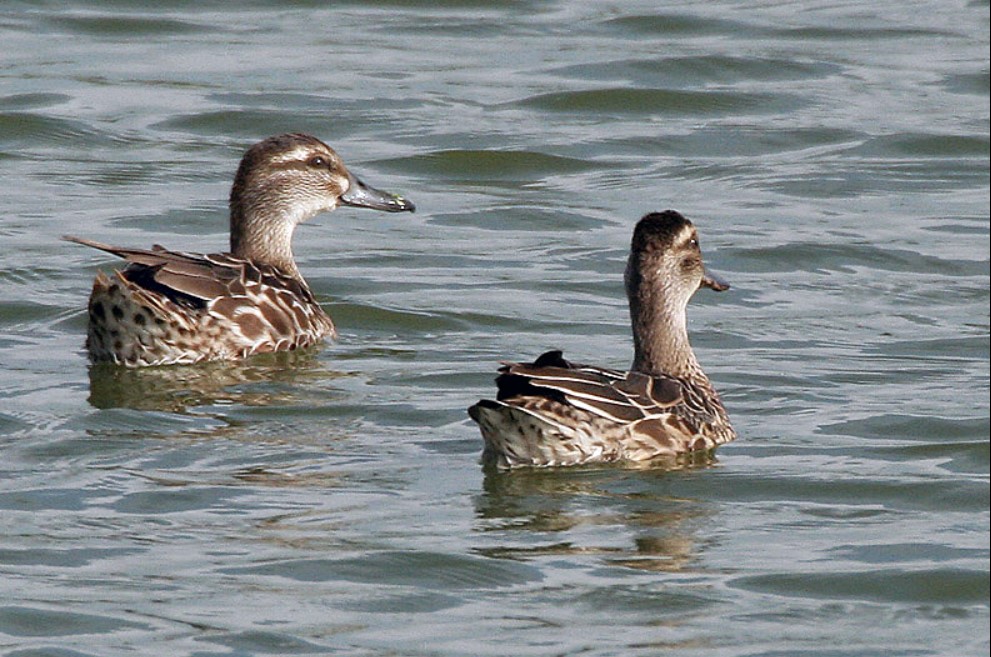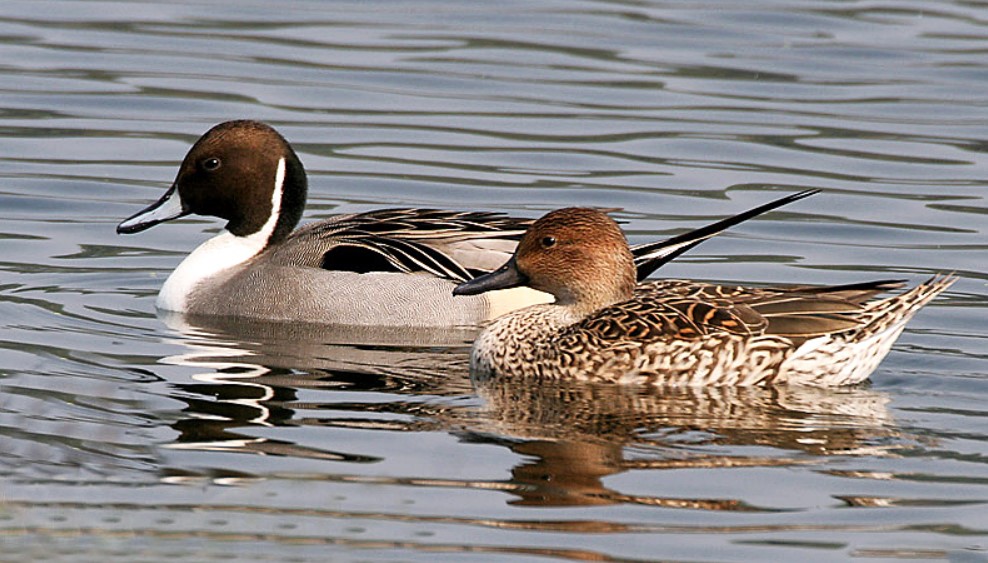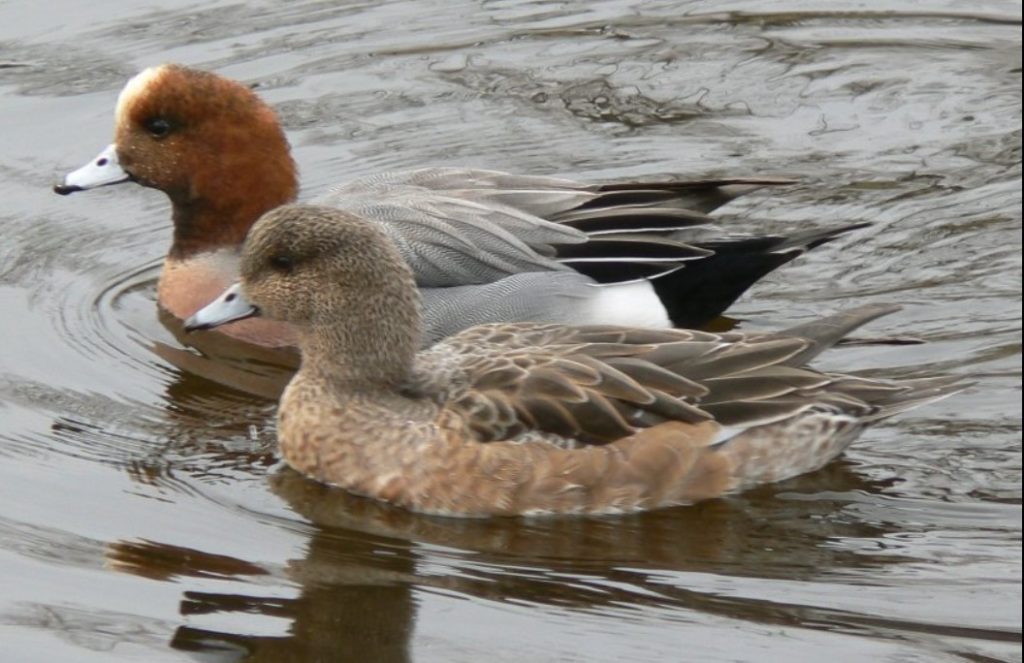The Anatidae family comprises birds commonly known as ducks, geese, and swans, and it is found across every continent except Antarctica. Members of this family are adapted to aquatic life with webbed feet, flattened bills, and a waterproof plumage. They inhabit a variety of water bodies including lakes, rivers, marshes, and coastal waters.
Anatidae species are highly adaptable and occupy a wide range of habitats. They are found in both freshwater and marine environments, from temperate to tropical regions. Many species undertake long migratory journeys between breeding and wintering grounds.
Crested duck
 The Crested Duck (lat. Anas crecca) is a species of duck that breeds in the temperate zone of Eurasia and migrates south during the winter months. This is the smallest species of duck in Europe, which is why this bird is called krdža in Serbian (from the adjective kražljala — underdeveloped).
The Crested Duck (lat. Anas crecca) is a species of duck that breeds in the temperate zone of Eurasia and migrates south during the winter months. This is the smallest species of duck in Europe, which is why this bird is called krdža in Serbian (from the adjective kražljala — underdeveloped).
It is a very social species and can form large flocks outside of the breeding season. It is most often found in overgrown wet or watery habitats where it feeds on plant seeds and aquatic invertebrates. The North American ferret (lat. Anas carolinensis) was previously considered (according to some authors still belongs to) a subspecies of ferret (lat. Anas crecca).
Krdža is the smallest non-diving duck with a body length of 20 to 30 centimeters and an average weight of about 340 grams for males and 320 grams for females. The wingspan is between 17.5 and 20.4 centimeters, with a wingspan of 53 to 59 centimeters. The length of the beak is 3.2-4 centimeters, and the tarsus is between 2.8 and 3.4 centimeters.
From a distance, the male in breeding plumage appears grey, with a black head, yellow undertail and a white line along the sides of the body. The head is chestnut in color, with a broad, iridescent dark green face mask in the shape of a crescent or a teardrop that starts just in front of the front edge of the eye and goes halfway up the back of the neck. This mask is limited by a thin yellow-white line that extends from the end of the mask and goes along the edge of the mask creating a frame around it.
The chest is dark colored with small brown round tufts. The middle of the belly is white, while the rest of the body is whitish with thin and thick black beaks, which even from a short distance give the impression that the bird is gray. The flight feathers are dark gray-brown, while the wing mirror is an iridescent black-green with white tips forming the lower edge of the mirror, and the upper edge is formed by the yellow feathers of the flight feathers. The underwing is white, with gray primary feathers and densely distributed black spots on the inner coverts and black tip. The tail and tail coverts are black, with a light yellow triangular-shaped undertail.
Grogotovac
Grogotovac (lat. Anas querquedula) is a small species of float that does not dive in search of food. It breeds in most of Europe and Asia, but is a strictly migratory species whose entire population migrates during the winter to southern Africa, India (primarily in Santaragachi) and Australasia, where it gathers in large flocks.
Wild duck
Mallard (lat. Anas acuta) is a species of duck with a wide distribution. It breeds in the north of Europe, Asia and North America. It is a migratory bird that spends the winter months from the south of its breeding area to the equatorial belt. Although it has a wide area of distribution, this species is without geographical features, and a possible conspecies species, the spike of wheat (Anas eatoni), is considered a separate species. 
This is a larger duck, and the protruding middle tail feathers in males are the reason for this name, both in Serbian and Latin. Both sexes have blue-gray bills and gray legs. The coloration of the male is more impressive, with a thin white stripe from the back of the chocolate-colored head down the neck. The male also has more attractively colored plumage, grey, brown and white, with black areas visible on the flanks and back. The coloration of the female is more subtle and subdued, with dark brown plumage similar to that of female ducks that do not dive for food. Females have a coarse chuckle as a way of advertising, while males have a flute-like whistle.
The mallard is a duck that inhabits open wetlands, where it nests on the ground and usually a decent distance from water. It feeds by scavenging for plants, small invertebrates during the breeding season. A very social (likes to associate) species in the non-breeding period, when it forms large mixed flocks with other species of ducks. Human activity, such as agriculture, hunting and fishing, has greatly affected the abundance of this species. However, thanks to its large distribution area and large population on all three continents, it is not globally threatened.
Whistleblower
 This non-diving duck has a body length of 42-52 centimeters with a wingspan of 71-80 centimeters and a weight of 500 to 1073 grams. Males in breeding season have gray flanks and backs, with black rumps and a dark green wing mirror and white wing area seen when resting or flying.
They have a pink breast, a white belly and a chestnut head with a yellowish crown. Non-breeding (ecliptic) males look like females. Females are light brown in color, similar to females of American whistling (lat. Mareca americana). It is easily distinguished, except from the female American whistling, by the shape of the body. This species has a lighter head and white coverts of flight feathers on the inside of the wings. The female can be a red morph with a red head and a gray morph with a gray head.
This non-diving duck has a body length of 42-52 centimeters with a wingspan of 71-80 centimeters and a weight of 500 to 1073 grams. Males in breeding season have gray flanks and backs, with black rumps and a dark green wing mirror and white wing area seen when resting or flying.
They have a pink breast, a white belly and a chestnut head with a yellowish crown. Non-breeding (ecliptic) males look like females. Females are light brown in color, similar to females of American whistling (lat. Mareca americana). It is easily distinguished, except from the female American whistling, by the shape of the body. This species has a lighter head and white coverts of flight feathers on the inside of the wings. The female can be a red morph with a red head and a gray morph with a gray head. 




